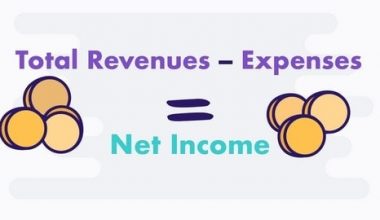The Generally Accepted Accounting Principles (GAAP) are a set of regulations, guidelines, and principles that all corporations in the United States must follow. The Financial Accounting Standards Board (FASB) and the American Institute of Certified Public Accountants established it in the United States (AICPA).
The Generally Accepted Accounting Principles are at the heart of all of a company’s accounting transactions, regardless of its kind. Businesses use it to organize and summarize financial data before entering it into accounting records.
What Is GAAP (Generally Accepted Accounting Principles)?
GAAP is a set of guidelines for preparing financial statements for publicly traded organizations. These standards serve as the foundation for more detailed, sophisticated, and legalistic accounting regulations.
To a large extent the GAAP covers, Financial statement presentation, liabilities, assets, equity, income and expenses, business combinations, foreign currency, derivatives and hedging, and non-monetary activities.
Read Also: Business Communication: How to Develop an Effective Communication Strategy
The information in financial accounting is often dependent on past data. In other words, financial data must adhere to the generally accepted accounting principles in order to permit comparisons.
Meanwhile, while the Financial Accounting Standards Board sets the general GAAP, the Governmental Accounting Standards Board (GASB) sets GAAP for state and local governments.
Publicly-traded corporations must comply with GAAP as well as the SEC.
History of the Generally Accepted Accounting Principles
Companies would be allowed to communicate financial information in whatever way best meets their requirements if there were no regulatory restrictions. With complete freedom to portray a company’s financial situation in the best possible light, investors might easily be misled. The Great Depression of 1929, a financial disaster that wreaked havoc on millions of Americans, was largely blamed on firms’ poor and misleading reporting techniques. As a result, the federal government, in collaboration with professional accounting organizations, set out to develop guidelines for the ethical and accurate reporting of financial data.
The American Institute of Accountants initially adopted GAAP nomenclature in 1936, according to Stephen Zeff of The CPA Journal (AIA). The Securities Act of 1933 and the Securities Exchange Act of 1934, both enacted by the US Securities and Exchange Commission (SEC) and aimed at public corporations, were the first laws to approve GAAP. However, the Financial Accounting Standards Board (FASB), an independent body, now reviews and modifies GAAP on a regular basis.
Also, all 50 state governments now prepare financial reports in accordance with GAAP. And despite the fact that only about half of U.S. states compel local governments to follow GAAP, the Governmental Accounting Standards Board (GASB) estimates that over 70% of county and municipal financial offices do so regardless.
Read Also: GAAP: Overview, Importance, History, Limitations
Understanding the Generally Accepted Accounting Principles
GAAP aims to harmonize and regulate accounting definitions, assumptions, and practices across all industries. These principles generally cover revenue recognition, balance sheet categorization, and materiality.
GAAP’s main purpose is to ensure that a company’s financial statements are accurate, consistent, and comparable. Basically, this allows investors to more easily examine and extract important information from a company’s financial records, such as trend data over time. It also makes it easier to compare financial data from different organizations.
What Are the Accounting Principles?
The best method to grasp the GAAP requirements is to study the 10 accounting principles.
#1. Principle of Economic Entity
Because a business is regarded as a separate entity, its operations must be maintained separately from the financial operations of its owners.
#2. The Principle of the Monetary Unit
Because of the monetary unit assumption, accounting records can only contain transactions in US dollars. It’s worth noting that accountants ignore the effects of inflation on the monetary amounts they report.
#3. The Principle of Time
Weeks, months, quarters, a calendar year, or a fiscal year are all examples of short, discrete-time spans in which business activity can be reported. The time interval must be specified in the financial statement headings, such as the income statement, cash flow statement, and stockholders’ equity statement.
#4. The Principle of Cost
The historical cost of any product shows up in the cost principle. This refers to money or money equivalents that were useful to purchasing something in the past.
The value of this asset has been adjusted for inflation. The financial statements should report the historical cost.
#5. The Principle of Full Disclosure
In the content of the financial statements or in the notes to the statements, all information relevant to the firm that is important to a lender or investor must be disclosed. This is why financial statements contain a large number of footnotes.
Read Also: Double-Entry Accounting Explained!!! Definition, How it Works, & Examples
#6. The Principle of Going Concern
This accounting principle refers to a company’s intention to continue operations and obligations for the foreseeable future rather than liquidate the company.
#7. The Principle of Complementation
Businesses must employ the accrual foundation of accounting and match business income to company expenses in a specific time period to comply with the matching principle.
Sales commissions, for example, should be reported in the same accounting period as sales revenue (and not when they were paid).
#8. Principle of Revenue Recognition
Revenues must reflect on the income statement in the period in which earnings come in under the accrual approach of accounting. This means that revenues recognition starts as soon as a business sells a product or renders a service. This is true whether or not the funds actually come in.
#9. Principle of Materiality
When the sum is minor or unimportant, the materiality principle relates to a misstatement in accounting records. Accountants often round to the nearest dollar in financial statements because of the materiality principle.
#10. Principle of Conservatism
If accountants are unsure how to record an item, the conservative principle requires them to acknowledge prospective expenses and liabilities right away. It instructs the accountant to foresee losses and select the option that would result in lower net income and/or lower asset value.
Potential lawsuits, for example, may be considered losses and reported, but potential gains from other sources are not.
Read Also: Introduction to Financial Accounting
What Are the GAAP’s Ten Principles?
There are ten ideas that can assist you in comprehending the GAAP standards and rules’ objectives.
#1. The Regularity Principle
This states that accountants must follow GAAP rules and regulations.
#2. The Consistency Principle
All items should be entered exactly as they were fixed by the accountants. Accountants can avoid errors and discrepancies by using similar standards in the reporting process.
The accountants are obligated by this principle to thoroughly disclose and explain the reasons for any changes or adjustments to the standards.
#3. Sincerity Principle
According to this GAAP principle, an accountant should accurately describe a company’s financial status.
#4. The Principle of Method Permanence
The emphasis of this principle is on the need for consistency in financial reporting procedures.
#5. The Non-Compensation Principle
Financial information in its entirety, including both positive and negative aspects, should be given. This should be done without the expectation of an asset compensating the debt or an expense compensating the revenue.
#6. The Prudence Principle
Financial data representation should be done “as it is” rather than based on guesswork.
#7. The Continuity Principle
The principle is based on the premise that the company will continue to operate in the future.
#8. The Periodicity Principle
The accounting entries must spread out over the appropriate time periods.
#9. The Full disclosure Principle
Accountants must strive for complete transparency while preparing financial reports.
Read Also: Monthly Report: How To Write a Good Monthly Report
#10. Principle of Utmost Good Faith
This principle ensures that all parties involved in a transaction are truthful.
While large companies use GAAP principles when reporting financial information, if you believe your small business will be subject to GAAP in the future, you should adopt the standard now.
Observance of GAAP
Basically, if a company’s stock is publicly traded, its financial statements must comply with the Securities and Exchange Commission’s requirements (SEC). The Securities and Exchange Commission (SEC) requires publicly traded companies in the United States to file GAAP-compliant financial statements on a regular basis in order to remain publicly listed on stock exchanges. In other words, an appropriate auditor’s opinion, coming from an external audit by a certified public accounting (CPA) company, ensures GAAP conformity.
However, GAAP is seen positively by lenders and creditors, despite the fact that it is not needed for non-publicly traded corporations. When giving business loans, most financial institutions will need annual GAAP-compliant financial statements as part of their debt covenants. As a result, GAAP is followed by the majority of corporations in the United States.
Investors should be careful if a financial statement is not prepared in accordance with GAAP.
Without GAAP, comparing financial statements from different companies, even within the same industry, would be extremely difficult, making apples-to-apples comparisons difficult.
Meanwhile, when reporting financial results, certain organizations may use both GAAP and non-GAAP measurements. Non-GAAP measures must be identified in financial statements and other public disclosures, such as press releases, according to GAAP standards.
Read Also: PRINCIPLES OF FINANCE
What Are the 4 Principles of GAAP?
What are the 4 rules that make up GAAP?
GAAP has four basic restrictions: it includes objectivity, materiality, consistency, and prudence. Objectivity includes things like how independent the auditors are and whether or not the information can be checked.
Why Is Generally Accepted Accounting Principles?
Financial statements are made and reported using generally accepted accounting principles (GAAP). The 10 GAAP principles are about making sure that accounting is consistent, open, and ethical. GAAP is only required for companies that are public and regulated, but it is strongly recommended for all companies.
What Is the Difference Between GAAP and IFRS?
GAAP stands for Generally Accepted Accounting Principles, which are the widely accepted financial reporting rules in the United States. International Financial Reporting Standards (IFRS) are a collection of internationally approved accounting standards used by the majority of the world’s countries.
What Is an Example of GAAP?
To ensure credible and meaningful accounting statements, Generally Accepted Accounting Principles (GAAP) employs a number of standards and safeguards. Accounting, for example, is done in fiscal periods, which may or may not correspond to actual calendar periods.
Which GAAP Principle Is Most Important?
The principle of objectivity
Under generally accepted accounting principles, the objectivity principle is one of the most important rules to follow. The objectivity principle says that your accountant’s financial statements that are in line with GAAP must be based on objective evidence.






